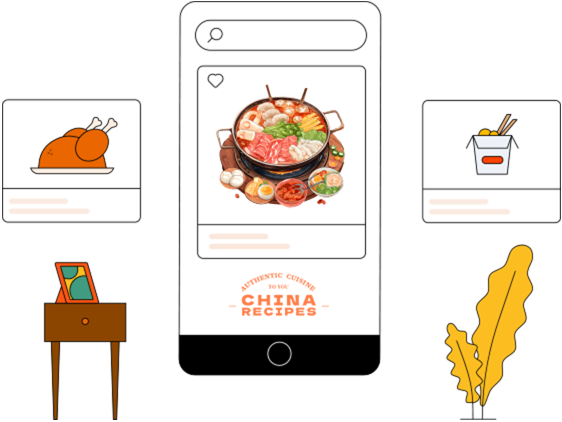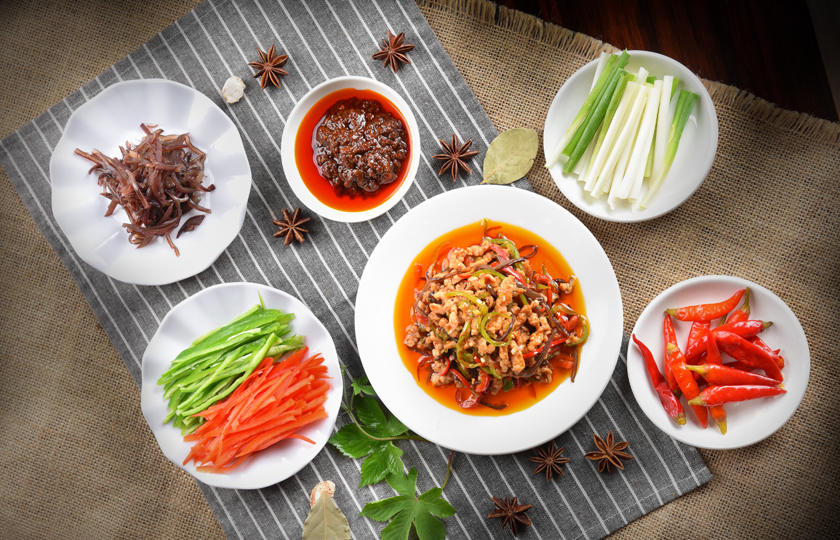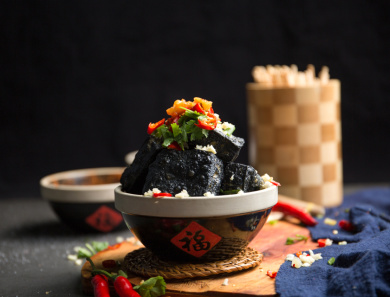What Is the Difference Between Hunan and Szechuan Food: Spicy Showdown
Hunan food and Sichuan food both belong to the eight major cuisines of China and are famous for their "spiciness". However, there are significant differences between the two in terms of taste, cooking techniques, ingredient selection, and cultural background.
Differences in spiciness
Hunan cuisine features freshness and spiciness. The spiciness mainly comes from fresh peppers (such as small chili peppers, facing heaven peppers) and chopped peppers, presenting a direct and intense spiciness.
On the other hand, Sichuan cuisine emphasizes numbness and spiciness. The spiciness mainly comes from Sichuan peppercorns (numbing effect) and dried chili peppers (spicy), and this combination of numbness and spiciness is the iconic flavor of Sichuan cuisine.
Differences in taste levels
Hunan cuisine is relatively simpler in taste, mainly including salty - spicy and sour - spicy flavors. For example, Xiangxi Grandma's Dish(湘西外婆菜) mainly tastes salty - spicy, and the rich texture is presented through the combination of ingredients such as dried radish and dried mustard greens.
Sichuan cuisine has rich taste levels. Besides numbness and spiciness, there are also various compound flavors such as fish - flavored, strange - flavored, sour - spicy, and sweet - sour. Take twice - cooked pork as an example. It has the mellow taste of pork, the sauce flavor of broad - broad bean paste(Doubanjiang), the fresh flavor of green peppers, and the numb and spicy taste brought by Sichuan peppercorns.
Differences in seasoning preferences
Seasonings in Hunan cuisine:
It has a preference for fresh peppers, chopped peppers, and self - made pickled vegetables, and uses Sichuan peppercorns less. The sour - spicy flavor often comes from pickled ingredients (such as pickled cowpeas).
Seasonings in Sichuan cuisine:
It often uses processed peppers (such as chili powder, broad - bean chili paste, pickled peppers) and Sichuan peppercorns. Chili oil is the core seasoning, which gives the dishes a bright red color.
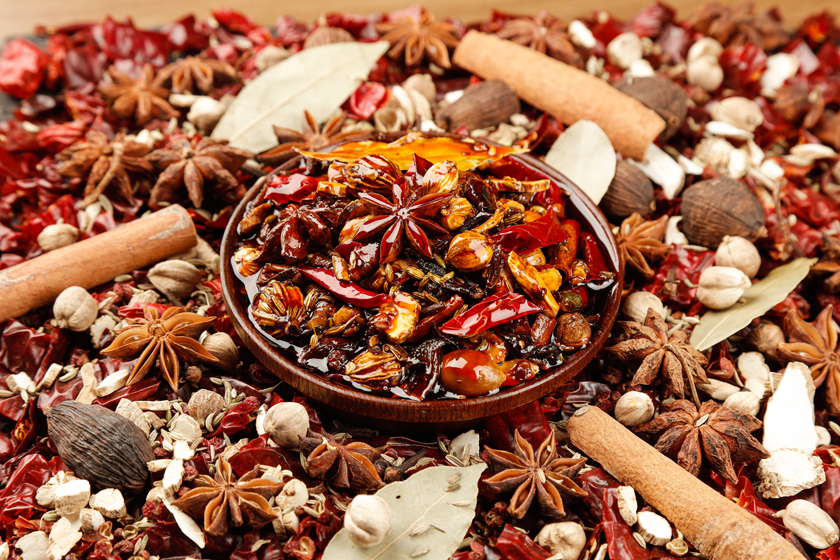
Differences in cooking techniques
Hunan cuisine:
It mainly features simmering, stewing, steaming, and curing. It emphasizes the original flavor of the ingredients. For example, bacon is preserved through smoking, and steamed fish head with chopped peppers locks in the freshness and tenderness by steaming.
Sichuan cuisine:
It is good at high - heat cooking methods such as stir - frying, dry - roasting, and deep - frying. It attaches great importance to knife skills and flavor variations. Representative dishes include Kung Pao Chicken (sweet, sour, spicy, and numbing) and Poached Fish in Chili Oil (spicy, numbing, fresh, and fragrant).
Differences in food culture
Hunan cuisine:
Originating from the geographical environment of Hunan with mountains and rivers, it pays attention to "fragrant, fresh, soft, and tender" characteristics. The dishes are substantial and satisfying. For example, Xiangxi bacon reflects the wisdom of preserving ingredients in mountainous areas.
Sichuan cuisine:
Influenced by the rich products in the Sichuan Basin and ancient trade, it stresses "each dish has its own unique flavor, and hundreds of dishes have hundreds of tastes". It has strong adaptability and suits the general public's taste.
Differences in dish styles
Hunan cuisine:
The dish styles are more simple and unadorned. It emphasizes the original taste and flavor of the ingredients, such as Stir - Fried Pork with Chili, Steamed Fish Head with Chopped Peppers, and Xiangxi Bacon.
Hunan cuisine dishes are usually fresh and spicy, with a direct taste, making them suitable for people who like pure spicy flavors.
Sichuan cuisine:
The dish styles are diverse. There are classic dishes with spicy, numbing, fresh, and fragrant flavors (such as Mapo Tofu and Kung Pao Chicken), as well as sour - spicy appetizing dishes (such as Pickled Fish and Poached Sliced Beef in Chili Sauce).
Sichuan cuisine dishes are usually bright - colored and pay attention to plating, providing visual enjoyment.
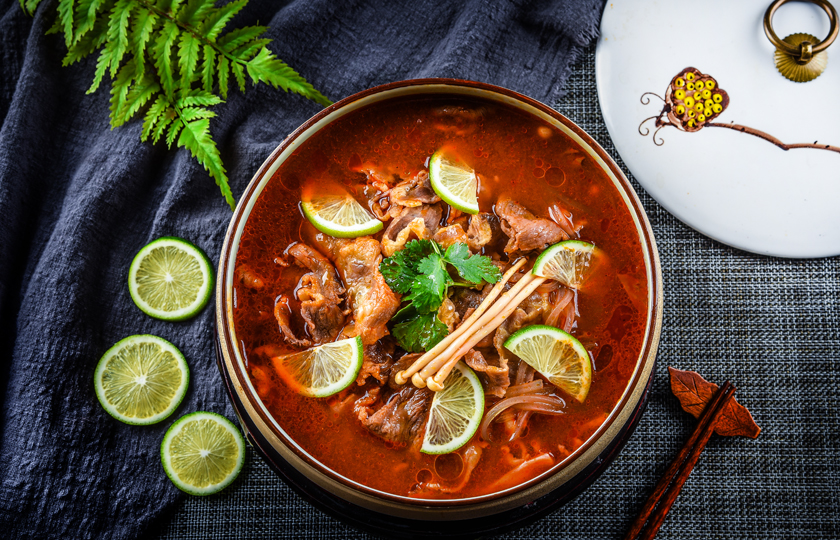
Representative dishes
Hunan cuisine:
Steamed Fish Head with Chopped Peppers: Fresh, spicy, sour, and the fish head is tender.
Stir - Fried Pork with Chili: Fresh, spicy, and delicious, and the meat is firm.
Xiangxi Bacon: Smoked bacon with a mellow texture.
Shredded Cabbage: Crispy, refreshing, and the sour - spicy taste is just right.
Sichuan cuisine:
Mapo Tofu: Spicy, numbing, fresh, and fragrant, and the tofu is smooth.
Kung Pao Chicken: Sweet, sour, and spicy, the chicken is tender, and the peanuts are crispy.
Poached Sliced Beef in Chili Sauce: Spicy, numbing, fresh, and fragrant, the beef is tender, and the soup is bright red.
Pickled Fish: Sour, spicy, and appetizing, and the fish is fresh.
Consumption scenarios
Hunan cuisine:
The fresh and spicy flavor of Hunan cuisine is more suitable for people who like pure spicy flavors and is suitable for daily family gatherings.
The sour - spicy flavor of Hunan cuisine can also whet the appetite and relieve greasiness, making it suitable for hot weather.
Sichuan cuisine:
The spicy and numbing flavor of Sichuan cuisine is suitable for large - group gatherings, especially in winter, as it can drive away the cold and warm the body.
Sichuan cuisine has a rich variety of dishes, suitable for people with different tastes.
If you like spicy, numbing, fresh, and fragrant flavors with rich taste levels, Sichuan cuisine is a good choice; if you prefer fresh, spicy, sour, and simple - direct flavors, Hunan cuisine may be more suitable for you.
Which is healthier Hunan or Szechuan?
I think both Hunan cuisine and Sichuan cuisine belong to the heavy - flavored cuisines.
Sichuan cuisine is heavy in oil and Sichuan peppercorns. It is easy to cause excessive internal heat, and may cause great irritation to the gastrointestinal tract for those who are not used to this kind of taste.
Although Hunan cuisine uses relatively less oil, its flavor is inclined to be salty and spicy, which may also impose a burden on the stomach.
Both of them are suitable for occasional consumption. If you attach importance to health, you can choose light and low - oil cooking methods.





